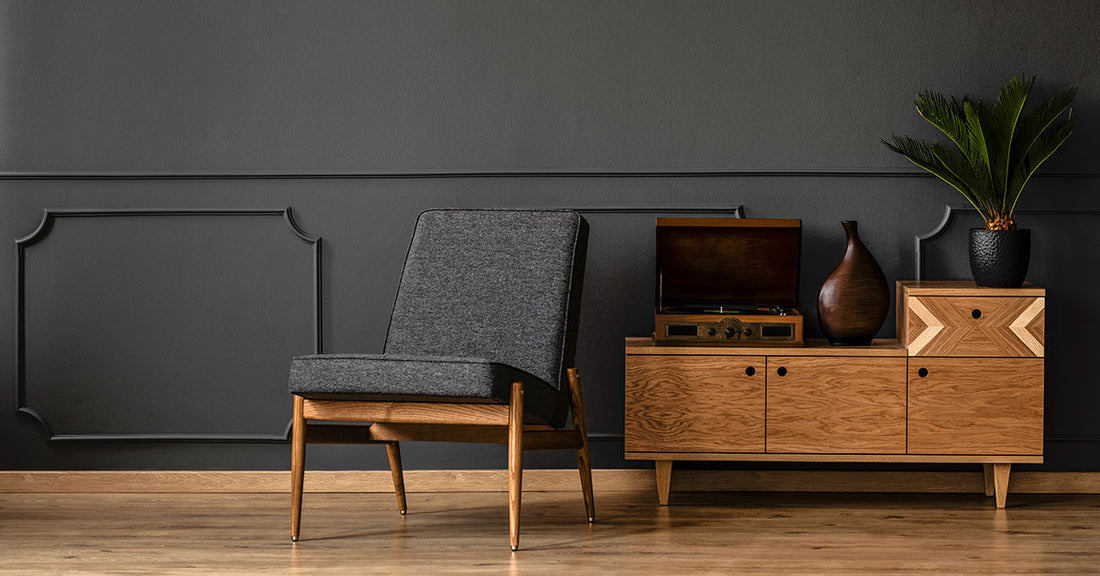
Practical Décor and Design Tips for Rooms with Dark Walls
Share
White walls and off-white walls are the standard, largely because you can match anything to them, and because light colors generally make a room feel larger and brighter. But even if they're not as fundamentally versatile, black, navy blue, slate, charcoal, forest green, chocolate, and other dark colors can be used for walls to great effect if you go about it smartly.
Dark-colored walls can create warmth, coziness, and particular moods in ways that light-colored walls don't. Also, light interacts with dark colors in more subtle and dynamic ways, while it interacts with white and near-white walls in a static way. This adds character and drama to a room.
Additionally, contrary to the popular belief that only light walls make a room feel bigger, dark walls can very effectively make a small space feel larger. Because dark colors absorb the light, they can soften and blur the edges of a room, making it feel more expansive. Also, dark colors tend to recede visually, making the walls feel farther away.
It's a little trickier to furnish and choose décor for a room in your home that has dark walls, though. However, by following some basic guidelines, you can certainly pull it off, make the place look fabulous, and create a living space that successfully conveys the personality you're going for. Use the following design tips for rooms with dark walls to help steer your efforts.
How to Design a Room Around Dark Walls
- Limit dark walls to just one or a few rooms in your home. If too many rooms have them, you lose the dramatic effect of passing between rooms with light-colored and dark-colored walls, and it can also add up to too somber an atmosphere overall.
- Incorporate significantly paler shades of the wall color prominently throughout the room. Or, alternatively, use starkly contrasting pale colors.
- Repeat a bright accent color or two around the room.
- Hang art with white or light-colored backgrounds.
- Lightly colored natural wood—like Heywood-Wakefield's Northern Yellow Birch, for example—complements black, dark brown, and many deep greens, reds, blues, and other dark colors beautifully.
- Use a glossy finish with dark walls in rooms with architectural details, as this will help them stand out, rather than fade away.
- Consider leaving the ceiling or one accent wall white or a matching light color if you're concerned about the space feeling too closed-in or cave-like.
- Let in as much natural light as possible.
- Hang a mirror opposite the room's primary natural light source to carry it to the other side and magnify its effects.
- Place some items around the room made of glass, acrylic, or other materials that can catch the light dramatically.
- Incorporate plants and other natural elements in the room's décor to soften the effect of the dark walls and add that special vitality that only nature can provide. Greenery looks even more lush against a dark backdrop, and you can create a real forest-type feel if you want by placing lots of plants in the room.
